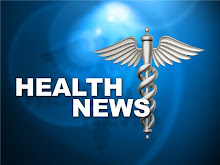
Here's what you need to know to sort hydration hype from good health advice.
The eight-glass formula doesn't fit for everyone. It depends on your gender, size, and level of activity, other studies note. The Institute of Medicine calls for adult men to drink 13 cups of fluid daily (which totals three liters, or a little more than four tall reusable water bottles) and women to have nine cups (2.2 liters, or about the amount found in three reusable water bottles). That number changes according to lifestyle. The more active a person is, the more they will need to replace fluids. Larger people, pregnant and nursing women, and those who take dehydrating medications also will likely need to account for that by adding more water to their diet.
If you are active, it's also important to account for your environment when calculating how much fluid you need. If you are exercising in temperatures that are very hot (likely leading you sweat more) or very cold (which can stunt your ability to sense dehydration), are an endurance athlete, or are active in a high-altitude area, you will probably need to up your water intake.
The debate about how much water we really need to be drinking is centered around the risk of hyponatremia, or taking in more fluid that the body loses while sweating. It is a serious condition that occurs when there is not enough sodium (or salt) in the body fluids outside of the cells. This can cause swelling, including of the brain. Hyponatremia happens when a person sweats excessively in one stint, does not eat, does not urinate enough, and drinks a great deal of water. Symptoms include confusion, headaches, muscle spasms, vomiting, convulsions, and fatigue. In the worst cases, hyponatremia can lead to seizures, coma, and even death.
There are exceptions for medical conditions and other situations, but athletes are often watched for signs of hyponatremia, especially those participating in endurance events like a marathon or triathlon.
Experts advise taking in some electrolyte-replacement fluids in addition to drinking water while you are exercising. However, you really only need a minimal amount to keep your body in balance and give you an energy kick. For example, it is recommended that runners out for 30 minutes to an hour take in three to six ounces of fluid every 15 or 20 minutes, including one sports drink. There's also evidence that simply taking sips or swishing a sports drink will do the trick.
Don't get sucked in to the sports drink hype
The risks of hyponatremia are steep, but take the hype about over-hydrating with a grain of salt. The multi-billion-dollar sports drink industry has pushed the idea that most people need more than water when they are active. However, some experts say that most people don't need a lot of sports beverages, and that they often just add calories to diets. The CDC recommends choosing sports drinks that do not have added sugar, which can total 38 grams in just one bottle.
It's OK to include other drinks when you're measuring how many fluids you take in per day. However, that isn't a license to subsist on soda, coffee, and sugary drinks. Although caffeine in soda and coffee won't dehydrate you, they shouldn't be used to quench thirst or as a substitute for water. Add them to your fluid tally, but do reach for water more often than you pop open a can of bubbly stuff.
People who imbibe, particularly wine and hard liquors, should also be aware that those drinks with a high alcohol content can be dehydrating. Beer, however, is less dehydrating because it is predominantly water. Drinking a glass of water before and after alcohol can't hurt fluid intake or the chances of avoiding a headache the next day.
Eat your water
You don't always have to sip to stay hydrated. Experts say that 20 percent (or 2-1/2 cups) of the water we ingest comes from the foods we eat. Choosing the right water-rich fruits and vegetables will also add nutrients to your diet, fill you up, and may even give some oomph to your exercise.
Fruits like strawberries, cantaloupes, and peaches are packed full of water and potassium, which is the electrolyte shed when your body sweats. Adding more to your daily diet will help balance the fluids your body needs, regulate your heartbeat and circulation, and tastes better than chugging an energy drink.
Selecting foods that fuel your health while helping keep you hydrated will give you more bang for your buck. Watermelon offers a vitamin C boost, broccoli helps fight cancer, pineapple aids muscle recovery after a big workout, and yogurt ups immunity. (Read more about foods that keep you hydrated and healthy here.)
Sneak in the good stuff
If you're up to your ears in cucumber salad or can't manage to down another bottle of water, work in little ways to stay hydrated. Add slices of orange, lime, kiwi, or watermelon to a jug of water for a burst of natural flavor. Make a regular old glass of tap water feel fancier by adding fizz with a counter-top carbonator (sold for about $100 and marketed as home soda-makers, skip the added flavors to make sparkling water in your own reusable bottles). Take 10 minutes once a week to stock your fridge, car, gym bag, and desk with water bottles so it's convenient to grab water wherever you spend most of your day. Finally, you can up your fluid intake with one little step by simply adding a straw to your glass of water.





























































0 comments:
Post a Comment